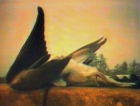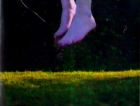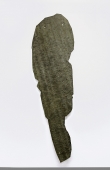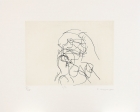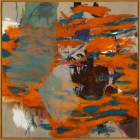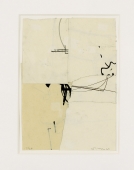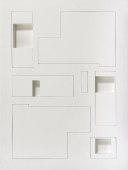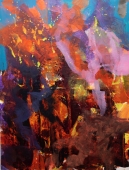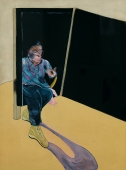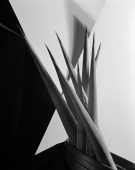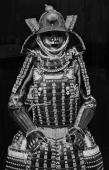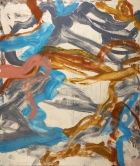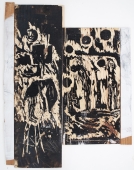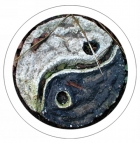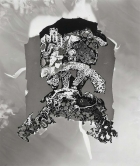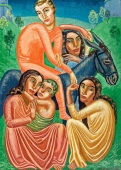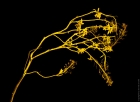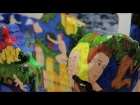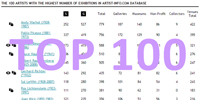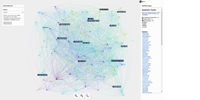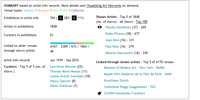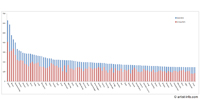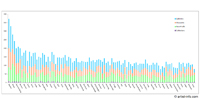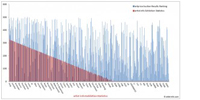
Artist | Jane Grant
https://www.artist-info.com/artist/Jane-Grant
Biography
Biography
Jane Grant is a Liverpool born artist who primarily works with video and film.
She studied Fine Art at Exeter College of Art and Design. She has exhibited widely both in one person exhibitions - 'Memento Mori' at Spacex Gallery and the Royal Albert Memorial and Museum, 'Aufsteigen' in Heilbronn, Germany and group exhibitions - most recently 'Kissing the Dust' at Walsall Museum and Art Gallery, Oldham Museum and Art Gallery and Huddersfield Museum and Art Gallery.
She taught sculpture at UWIC and is currently working as a lecturer in Visual Arts at the University of Plymouth.
About the work (english)
About the work (english)
In the exhibition Still (February - March 1999, Chapter, Cardiff), Grant shows three works Dogs in Cars Waiting (1996), Continuum (1998) and Suspension (1998).
Through her work the artist explores ideas of motion and stasis, creating the illusion of an impossible space between the two. By slowing down or manipulating the process of time her work intensifies the act of seeing and magnifies the real. To achieve this effect some of the works are digitally edited for example Suspension and Continuum, in these works time is tampered with, slowed down to an almost imperceptible pace. Often the works are projected at a monumental scale exaggerating their content to the point of excess. Grants films are silent emphasising image over sound, the gallery in which they are installed is quiet and still creating an atmosphere of tranquillity.
Her subject matter is a strange and fascinating mix of the banal, the poetic and the impossible, evoking a foreboding sense of the uncanny, we are not quite sure where we are although there is a sense in which we were already here once. No sooner than we have found a reference point this is disturbed by the framing, the silence, the movement within the works and the darkness that surrounds them.
The lack of narrative further disrupts our desire for closure or a neat conclusion; the bullet, the dogs, the pigeon and the suspended feet are doomed to inhabit a limbo between the past and future, hovering precariously between the known and the unknown. It is if we are stranded somewhere else, caught in a space and time that is at once ours and at the same time alien to us, the effect is both pleasurable and disquieting. 1 would like to thank Jane Grant for her hard work, stimulating conversation and good humour and Emma Posey for her fascinatino and insightful text
Exhibition 'Still'
The exhibition 'Still' includes three projected works: 'Dogs in Cars, Waiting', 'Continuum', and 'Suspension'.
'Dogs in Cars, Waiting' is an edited series of four black and white 16mm films of dogs waiting in cars for their owners return. The camera remains almost static whilst the dogs are constantly active, anticipating a return beyond the frame of the car and camera.
'Continuum' is a looped three framed video of a hypothetical bullet moving through space. The frames are slightly off set from each other causing the bullet image to shudder.
'Suspension' pairs a video of a dead pigeon located on a wall with a video of a pair of dangling, human feet. The pigeon's limp wing is caught in the wind and appears to slowly flap. The feet raised above the lawn appear to float.
Motion/Stasis
All of Grant's works are created from the time-based media of video or film. Her subjects suggest their own physical impediment enhanced by the projected frame which inhibits them further. Conversely, immobility is implied in the exhibition through the subjects activities. Grant suggests that in order to see something and understand its implications, it must be slowed down, a similar intimation made by Paul Virilio who stated that: 'The plastic arts will come to immobilize movement, thereby offering the illusion of seeing, of having the time to see'.(1)
The paradoxical relationship between motion and stasis is revealed in the exhibition through the employment of technology. in 'Continuum' the bullet fails to plummet or reach an escape velocity. It perpetually hovers in mid-flight. The visual resonance of the bullet is reminiscent of a bird who, in order to remain stationary, flaps its wings. This always seems somehow absurd and contradictory; an object with a fixed rate of motion appears static, an object with a fast rate of motion is imperceptible. The works in the exhibition 'Still' attest to this converse and contradictory relationship. 'Continuum' and the work 'Suspension' trace the endeavours of technological progress; sombre reflections on the hopeless attempt to defy gravity, to lift off, to take flight from the human inevitable. Such desires are often exercised through the visual simulation of movement. With cinematic special effects we approach the experience of a journey beyond our fleshy confines. The seminal film 'L'Arrivée d'un train en gare' made in 1895 forced audiences out of their seats, emphasising at once the unity of the visual and physical, and the technological divorce of the visual from the haptic.
As Scott Bukatman states: 'The replacement of the slow, horse-drawn coach by the speeding train shifted the rider's attention from the foreground to middle- and backgrounds. The windowed and enclosed train put the world behind glass and effectively filtered out auditory, olfactory, and haptic sensations of the world beyond the window, forcing a reliance on sight as the sole source of information.'(2)
The ambition to journey without moving is provided for the passenger or cinema goer who passively advances through space. Technologies, both cinematic and mechanical, enable us to extend the physical constrictions of the body. Yet the screen, like automation, is only an 'interface' enabling such a departure. The body can never be anything but an orchestrater of technology. We can never leave the body and the frustrations of this anchorage are referenced throughout Grant's work.
Empathy
The works refer to the desire to take flight. the frustrated forms fail to leave their confines. Their muted endeavours force the work beyond human articulation and comprehension. The work is silent, quiet, disquieting. The stifled activities amplify our attention to detail. Action, any action, becomes a gestural conveyance as we attempt to comprehend. The emphasis on speech and language through symbolic referents, and the study of the repetitive which constructs behavioural 'patterns' reveals the significance of psychoanalytic theory in Grant's work.
Awareness of our own breath, an important adjunct to Grant's work, is invigorated through the suppression of sound in the exhibition. Dogs wait in a stifled atmosphere, the pigeon is dead, feet float, and the bullet inversely denotes breath by suggesting its termination. We know instinctively the rate of breath and its pace when restricted. Breathing is intrinsic to life and continuum. When we cease to breathe we cease to exist and in catching our breath we pause. Empathy is enhanced through this biological understanding. A message latent in Grant's work is that to give something life, or resuscitate it, we recognise death or at least its possibility.
An instant assumption made is that if we cannot hear the work, we cannot be heard. Compassion for the mute works derives through our affinity with them, an experience or fear of experience, rather than altruism. Such empathetic understanding is placed under scrutiny on departing from the exhibition. The departure becomes a retreat from, or abandonment of, the struggling forces within the exhibition space. The implied trauma encourages an emotive response, a device which inscribes us in the work whilst compensating for the denial of a haptic or auditory experience.
Grant challenges our motivation for studying, preserving, or conserving other living things. Do the cars, dogs, bullets. pigeon, and feet read as generic signifier's and therefore maintain a banal, and distant understanding of other bodies? Are we culpable because we have witnessed their endeavours? Do we sigh with relief at the spectacle? The hybridisation of the tragic and comic in Grant's work does not reply to these questions: it remains doubtful of our emotive response and in doing so remains silently ambivalent.
'Suspension'
The looped works are given continuity through repetition, the suspension or extension of an instant. This circular pattern promises a closure, a rounding off, a tying of knots. Expectancy is enhanced through the physicality of the media of film and video. We assume an event is about to happen but the incident within the exhibition is the non-incidental. Any allusion to narrative or pending event is not provided: the work avoids both preludes and outcomes, hovering in the midst of an event-less presence like lost, found, or isolated film footage.
Our familiarity with edited or extended time through film and video uncannily causes real time in 'Suspension' to appear to slow down due to the slightness of the subject's movements. Such perceptual assumptions suggest a growing comprehension of cinematic language which Grant seeks to invert.
In 'Dogs in Cars, Waiting' the inanimate vehicles are central to the work. Destination, the anticipated point of arrival, has been inverted. The dogs wait for their owners' return, rather than the owners themselves anticipating arrival at their journey's end. The emphasis on redirecting expectations emerges again in 'Suspension'. The anticipated upward direction of both the pigeon and feet subtly touches upon the more ethereal qualities of levitation. Expectancy is light when imbued with desire and fantasy but becomes heavy with its obstruction resulting in fear and anxiety.
Magnitude The lens, which frequently magnifies time into the monumental or dramatic, is employed here to detail the subtle and banal. The attention to detail in all the work focuses in on the transformative properties of the frame. Donald Ihde discusses the evolution of perception through imaging technologies used in film, photography, and scientific instruments. He states: 'A counter example from the history of art is instructive: one could have gone around the environment and simply held up a frame filled with plate glass if the point were simply to mediate technologically what is seen - but it is the transformation which occurs through variational change, magnification for example, which makes the newly mediated vision interesting. In the cultural counterparts a similar "magnification" phenomenon occurs.'(3) Further, image technologies increase our familiarity with things out of scale such as infinite regression and the extremes of spatiality: the miniature to the immense.
The enlarged bullet in 'Continuum' endeavours to reaffirm a presence within the frame and by doing so disrupts time in relation to space. The three frames signify the past, the present and the the future. By constantly reenacting the 'presence' of the bullet however, history is perpetually dragged into the present and the forward trajectory of the future is retained; an arrested development. Barbara Maria Stafford claims that: 'The extension of vision permitted a form of travel ... The veil of the invisible was gently and noninvasively lifted. The eye could easily voyage through and beyond the densities of a plane, or silently journey beneath the stratified level.'(4)
Although 'the extension of vision' is apparent in the exhibition, Grant obstructs such a passage whilst suggesting a magnitude beyond the frame. We too become trapped, suspended, in compressed time in relation to the exhibition; like the dogs, we wait in a spatial and temporal passage with no obvious beginning and no visible end. Whilst the looped film and video works perpetually reenact the moment, the gallery's silence, darkness, and stillness enables contemplation away from the speed of life outside. The connection between the enframent of time in relation to space in the work and the boundary defined by the exhibition space creates a temporal and spatial 'mise en abîme' ('Russian doll' or a 'video feedback').
Sublime
The works in the exhibition constantly refer to the transmutation or elevation of forms into a 'higher' or 'other' state. They impress on us a rapidity (through decreasing speed) which forms an important element to the sublime; images shown too rapidly or briefly cannot make a conscious impression. The ethereal qualities in 'Suspension', and the exhibition's affiliation to a house of prayer, continues to shed light upon sublimity.
Scott Bukatman states: 'The sublime was constituted through the combined sensations of astonishment, terror, and awe that occur through the revelation of a power greater, by far, than the human. Those co-mingled sensations result from the rhetorical construction of grandeur (either grandly large or small) and the infinite. The object of sublime rhetoric is not all available to vision or description.'(5)
An important characteristic of the sublime is an allusion to a subjects secession beyond the visible frame. The works in the exhibition are inconclusive while all their subjects indicate a distant desire to see or be beyond the boundaries of the visual or physical. The etymological link between sublime and subliminal (limen) is echoed in the work by its reference to significant thresholds of perception. Limen is a threshold of consciousness below which stimulus is not perceived. The intangible quality of the work's projected media enhance a sense of the elusive. Grant places thresholds at odds with the level plane on which we usually function to trip, and trip again, until our perception has been at least temporarily refreshed.
Techno-sublime
Technology simplifies, creates interfaces, orders and frames and inherently in the framing process excludes information. Intrinsic to both technology and the sublime is the possibility suggested by the undisclosed. Through a technological imperative we desire to land, arrive, or leave the boundaries of the frame which conceals or denies. Jean-François Lyotard states that: 'thinking grasped by the sublime feeling is faced with quantities capable only of suggesting a magnitude or a force that exceeds its power of presentation.' (6) The subjects in the work anticipate forces beyond the frame as well as sound beyond the silence. Grant draws on the illusionary space as an interface, a surface that mediates, conceals complexities, and suggests possibilities.
Though surveillance, indicated in 'Dogs in Cars, Waiting' and 'Continuum', is a means of protection, it is equally recognised as an effective means of control. The dissemination of information, through television documentary and news, is presented as impartial, yet the frame as an interpretative device places the observer as a subject under control. Vision itself becomes focused and disciplined through the default frame. be it a pictorial frame or lens. The lens employed by Grant further references the struggle, escape, and desire beyond its boundary.
'Continuum' is constructed from composite bullets. The transformation from 'real' bullets to interpreted bullet parallels the distancing experience of the media. The initial correlating puns of shooting a bullet and shooting a film mask a serious meditation; that media is a powerful modern weapon. In war, the centres of communication are now dominated first as key to the system of control.
The sublime, its position as grandiose, tunnel-visioned, and even fascistic placed it - albeit temporarily - in the redundant pile of history. Rather than denying the fascistic elements of the sublime, Hal Foster describes the mediated effects of televised information on the Gulf War stating: 'It was bolstered: in a classic fascistic trope, my body, my subjecthood, was affirmed in the destruction of other bodies. In this techno-sublime, then, there is a partial return of a fascistic subjecthood, which occurs at the level of the mass too, for such events are massively mediated, and they produce a psychic collectivity.' (7)
The resurrection of the sublime seems to reemerge due to and through, technology. In the exhibition the control of other bodies 'massively mediated' through technology suggest both an enabling and destructive force beyond the confines of the work presented. As such the 'techno-sublime' forms the denouement of'Stili'.
Text by Emma Posey (She is an artist and writer currently coordinator of B10c, a forum for the arts and technology)
Notes
(1) Paul Virillo, Art of the Motor, University of Minnesota Press, 1995. p.69.
(2) Scott Bukatman, 'Visual Display - Culture Beyond Appearances'. The Artificial Infinite: On Special Effects and the Sublime, edited by Lynne Cooke and Peter Wollen, DiaCentre for the Arts, 1995, p.259.
(3) Don Ihde, 'Technology and the Politics of Knowledge', Image Technologies and Traditional Culture, edited by Andrew Feenberg and Alastair Hannay, Indiana University Press, 1995, p.157.
(4) Barbara Maria Stafford, Body Criticism: Imaging the Unseen in Enlightenment Art and Medicine, The MIT Press, 1991, p.343
(5) Ibid p.266.
(6) Jean-François Lyotard, Lessons on the Analytic of the Sublime, Stanford University Press, 1994, p.52.
(7) Hal Foster, The Return of the Real, The MIT Press, 1996, p.222.
 offers / Requests offers / Requests  |
About this service |
|---|
 Exhibition Announcements Exhibition Announcements  |
About this service |
|---|
 Visualization |
Learn more about this service | ||
|---|---|---|---|
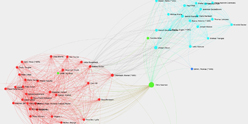
Interested in discovering more of this artist's networks?
3 easy steps: Register, buy a package for a visualization, select the artist.
See examples how visualization looks like for an artist, a curator, or an exhibition place: Gallery, museum, non-profit place, or collector.

Exhibition History

|
SUMMARY based on artist-info records. More details and Visualizing Art Networks on demand. Venue types: Gallery / Museum / Non-Profit / Collector |
||||||||||
| Exhibitions in artist-info | 2 (S 1/ G 1) |
Shown Artists - 4 of 4 artists (no. of shows) - all shows - Top 100
|
||||||||
| Exhibitions by type | 2: 1 / 0 / 1 / 0 | |||||||||
| Venues by type | 2: 1 / 0 / 1 / 0 | |||||||||
| Curators | 1 | |||||||||
| artist-info records | Feb 1999 - Apr 2014 | |||||||||
|
Countries - Top 1 of 1 United Kingdom (1) |
Cities 2 - Top of 2 Istanbul (1) Cardiff (1) |
Venues (no. of shows )
Top 2 of 2
|
||||||||
Curators (no. of shows)
Top 1 of 1
|
| Kasa Galeri | G | Apr 2014 - Apr 2014 | Istanbul | (14) | +0 | |
| Aceti, Lanfranco (Curator) | +0 | |||||
| Chapter | S | Feb 1999 - Mar 1999 | Cardiff | (4) | +0 | |
| Keep reading |











